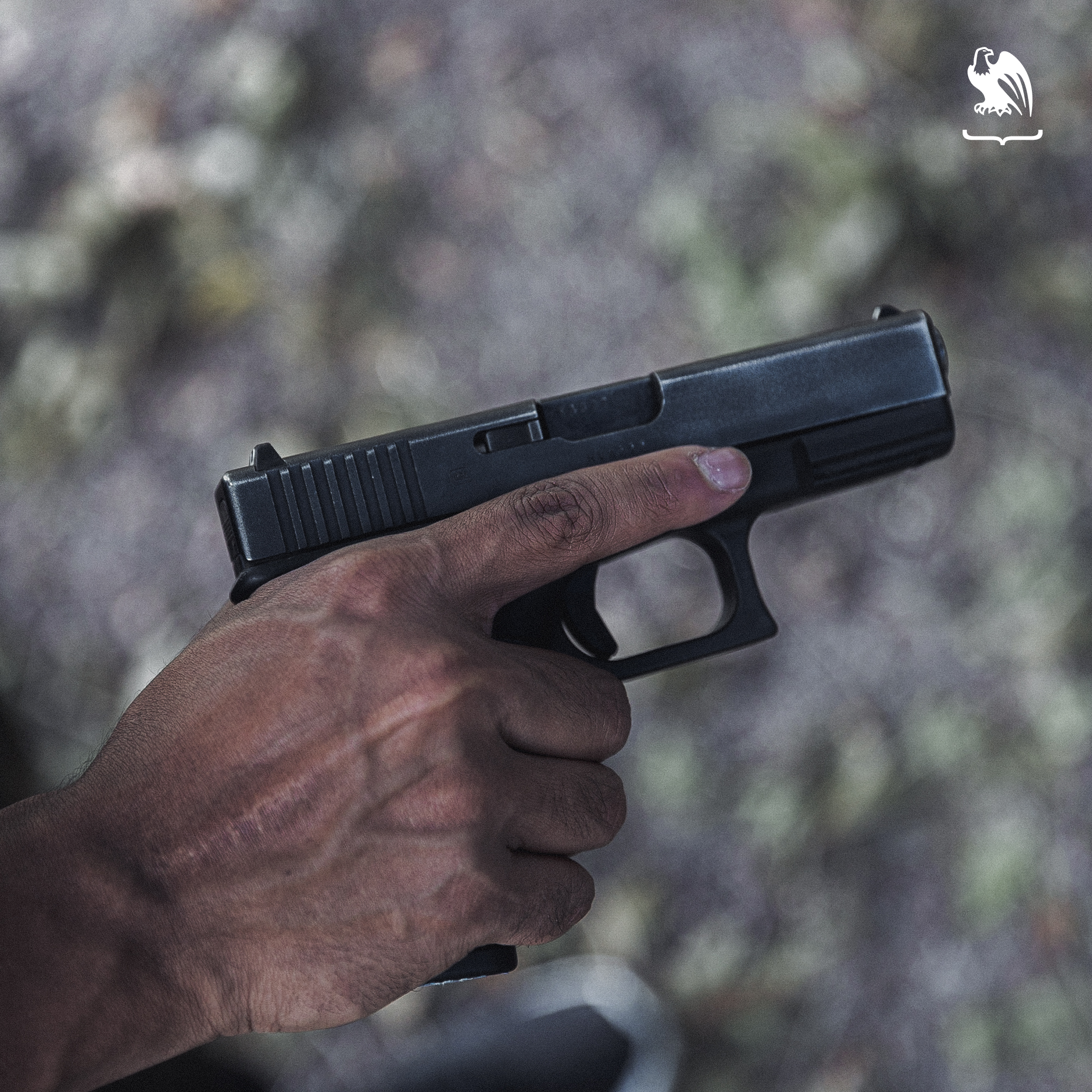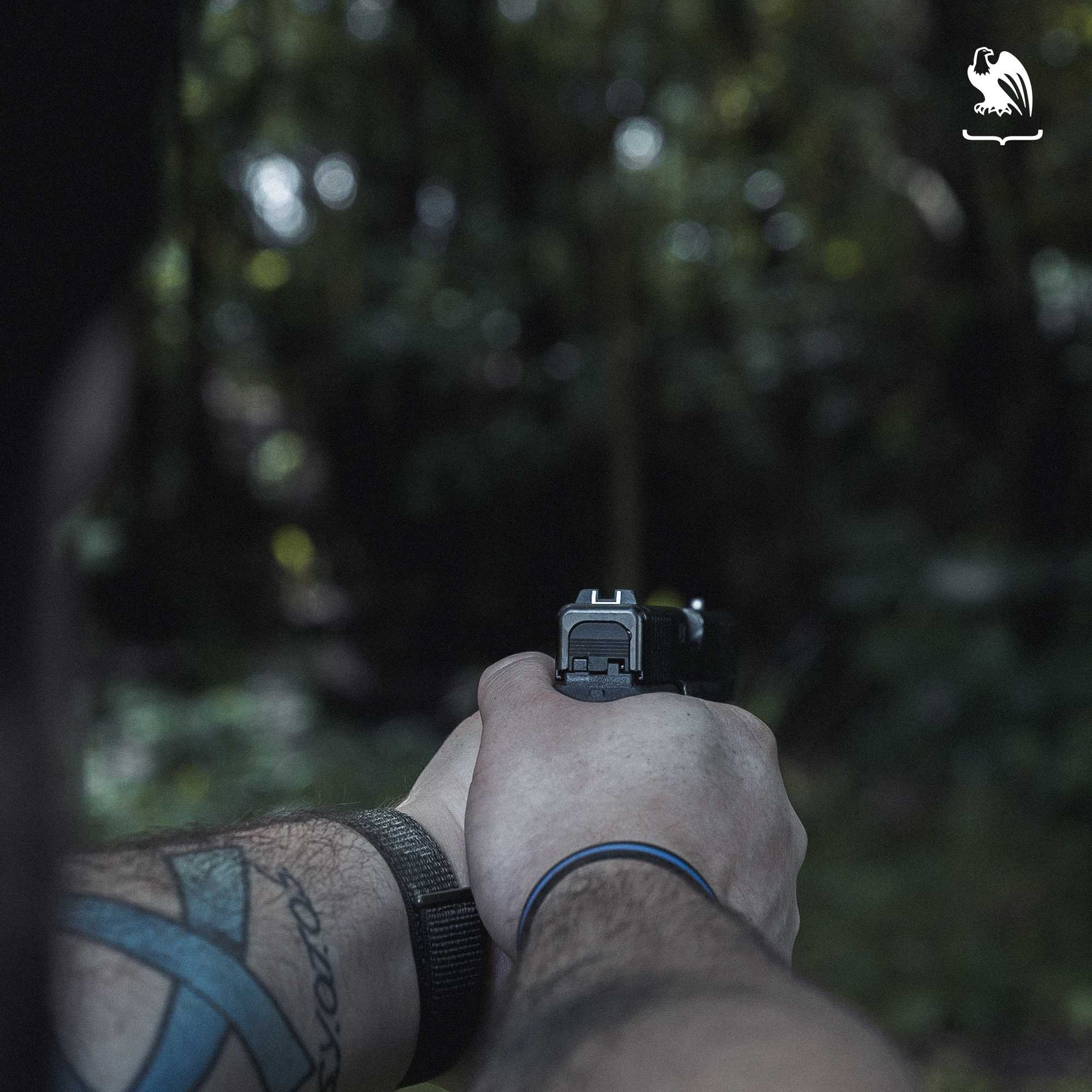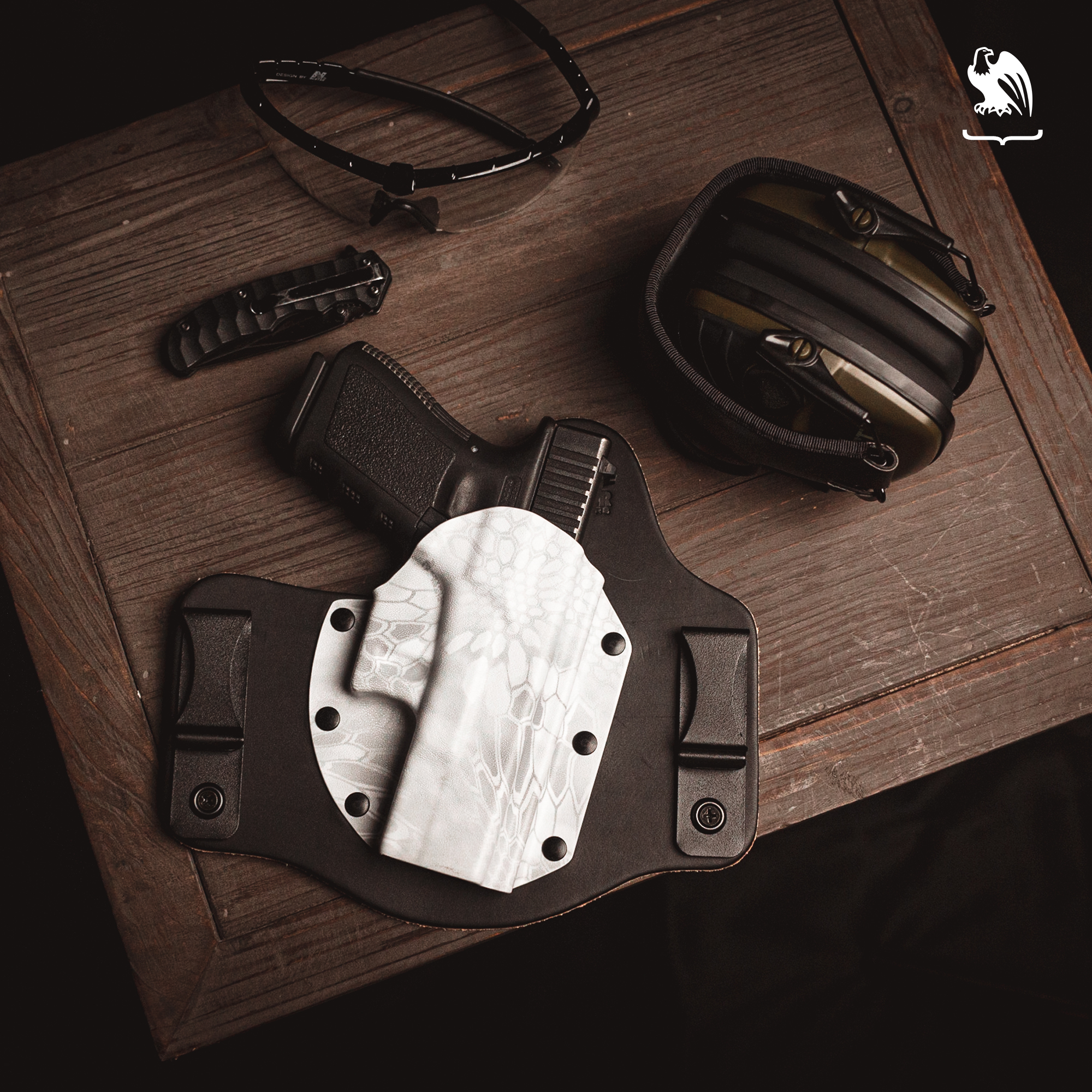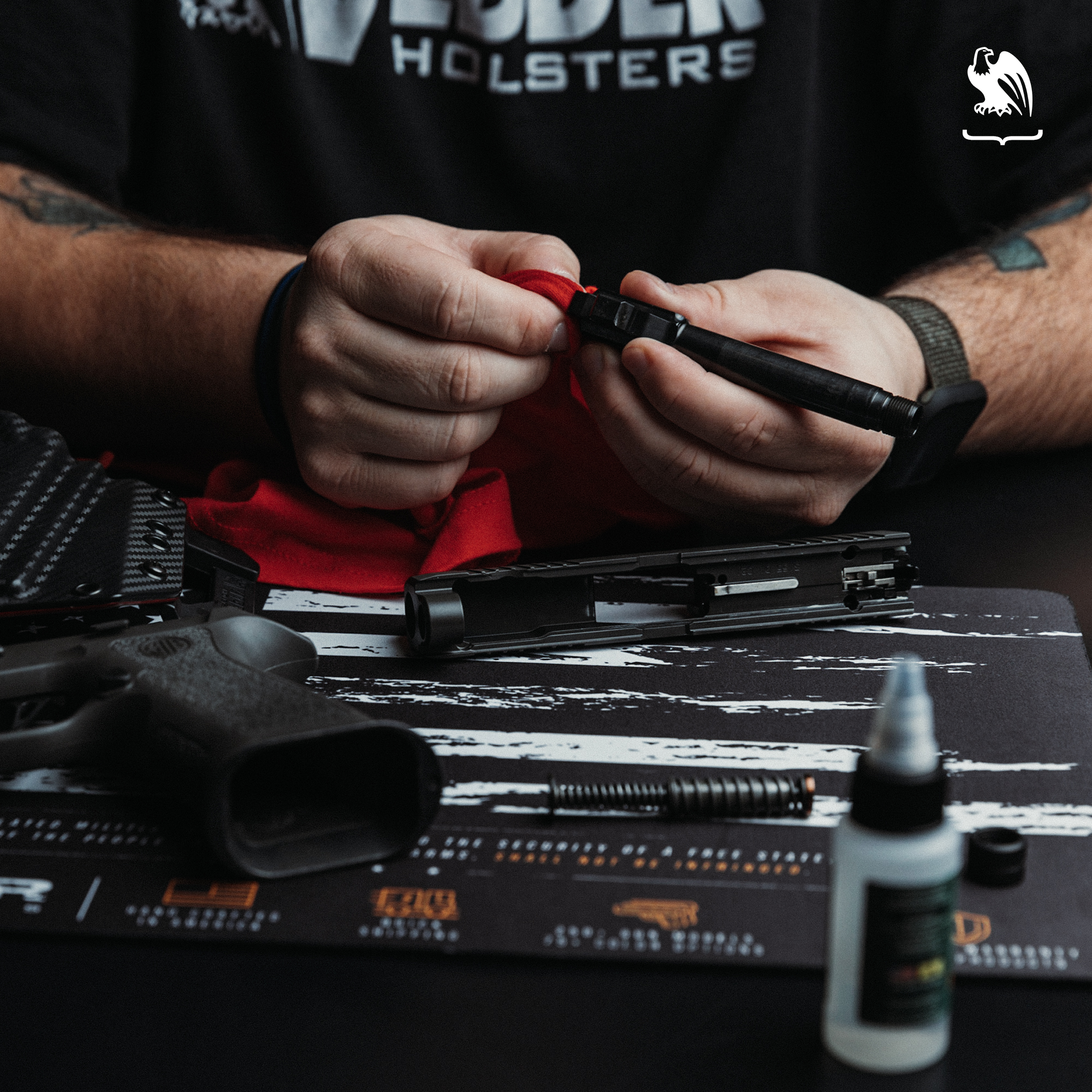How to Shoot Responsibly: 4 Rules of Gun Safety

As a gun owner, you are responsible for knowing how to handle your weapon safely and putting that knowledge into practice.
Hundreds of people are killed every year because of the mishandling of a firearm. Practicing safe gun handling techniques dramatically reduces the risk of accidentally shooting yourself or someone else, and incorporating these rules into your training routine should be a top priority.
There are countless safety tips out there, but for this article, we will focus on Col. Jeff Cooper’s 4 rules of gun safety. These four rules are considered the gold standard of firearm safety and provide an excellent foundation for all other related principles and training.
We’ll go over the 4 cardinal rules of gun safety below, then talk about some additional safety tips for gun owners.
4 Primary Rules of Gun Safety
Always Keep Your Gun Pointed in a Safe Direction
Keeping your weapon pointed in a safe direction is the number one most important rule of gun safety.
You should never, ever point a firearm at anyone or anything you are not willing to destroy. And that doesn’t mean just watching where you aim. It’s critically important to be mindful of where your muzzle is pointing at all times – when you draw, when you holster, when you set your gun down, when you reload – always.
Pointing the muzzle down toward the ground, or even up toward the sky if you’re shooting a rifle, is often the safest option. If you need to lay your firearm down, just be mindful of the direction the muzzle is facing and avoid pointing it toward an area where people might be.
Because most bullets can penetrate walls, you must also consider what may be on the other side of the wall your gun is facing. Are you pointing your weapon at your kid’s bedroom? A family bathroom? If you share a wall with your neighbor, are you pointing the muzzle at their home?
Also be mindful of flagging yourself and others as you draw and holster your weapon. Gunshot wounds are no joke, and holstering and unholstering your pistol is when you are at the most risk of an accidental discharge.
If you’re struggling to draw your pistol without it pointing at yourself, even for a brief moment, try practicing your draw with an unloaded gun until you get the hang of it.
Keep Your Finger Off the Trigger Until You’re Ready to Shoot
Another basic gun safety rule is to keep your finger off the trigger until you’re ready to fire.
When you first pick up a firearm, your initial instinct might be to lightly set your finger on the trigger, but under no circumstances should you do that. If your finger is positioned on or near the trigger, your chances of a negligent discharge dramatically increase.
Think about it; with your finger on the trigger, all it would take is a sneeze, a trip, or a startle to cause you to jerk or squeeze your hand and fire the gun.
A disciplined shooter never touches the trigger until their sights are acquired and they’re ready to take their shot. When holding a firearm, place your index finger on the side of the gun just above the trigger guard. Then, simply slide your finger down when you’re ready to shoot. It’s as easy as that.

Be Sure of Your Target and What Lies Beyond It
Before you ever pull a trigger, be absolutely sure of what you’re shooting at and what lies beyond it.
Whether you find yourself in a self-defense scenario or you’re heading outdoors to get in some practice, positively identify your target before you fire so you don’t accidentally hit something you didn’t mean to.
Because bullets travel so far and so powerfully, this rule includes consciously thinking about what may be located wayyyy past your target or what could be on the other side of a wall or other visual barrier.
You want to make sure that when you pull the trigger, you’re shooting your target and only your target – not at your upstairs neighbor or the house beyond the treeline.
Treat Every Gun Like It’s Loaded
A great way to prevent an accidental discharge is to treat every gun you come in contact with as though it is loaded – even if you know it is not.
The idea behind this rule is to build safe gun handling habits. When you assume every firearm you pick up is ready to fire, you start to keep it pointed in a safe direction with your finger off the trigger almost automatically in every scenario.
When you start to get lax with this rule at home, even when you’re positive your gun is unloaded, you may begin to get a little lazy with your safety habits the next time you’re handling a loaded weapon, which you obviously don’t want.
Another reason for this rule is that unless you’ve cleared a weapon yourself, you can’t guarantee its status. Even if someone hands you a gun that they say is unloaded, check it for yourself. Trust, but verify, as they say.
Also, keep in mind that if your firearm is out of your control for any period of time, don’t assume it has the same status as it did the last time you saw it. Always double-check, even if you’re 99.99% positive.
Bonus Gun Safety Rules

Now that you’re familiar with the 4 basic rules of gun safety, it’s time to go over some additional tips for owning and using a firearm responsibly.
Understand Your Gun’s Functions
The best time to learn how a gun operates is before you go to shoot it. Any time you pick up a new firearm, familiarize yourself with its structure and learn how to safely load and unload it, how its safety features work, and how to aim and shoot it. Understanding these functions can help ensure you use the weapon correctly and avoid making dangerous mistakes.
Use the Correct Ammunition
Just because a bullet can be shot out of a gun doesn’t mean it should.
There are countless types of ammunition out there of all different brands, calibers, charges, and sizes, each designed to perform a specific function. Shooting the wrong kind of bullet out of your gun will not only be less effective, but it can actually be dangerous. Always check your firearm’s manual to see what type of ammo it takes and stick to it.
Wear Eye and Ear Protection
We don’t have to tell you that guns are LOUD. In order to avoid hearing damage, you should always wear some sort of ear protection like shooting earmuffs or earplugs when shooting.
Because firearms also eject casings and emit gunshot residue containing debris and hot gasses, it’s a good idea to wear eye protection like shooting glasses or safety goggles as well.
Check out our recommendations on safety gear at our Resources Page here.

Never Handle a Gun Under the Influence
Handling a firearm requires focus and good judgment, both of which are significantly impaired when you’re under the influence of drugs or alcohol. So, it goes without saying that you should never, ever handle a gun while impaired. Period.
Store Guns in a Safe Place
As a gun owner, you are responsible for properly securing your weapon. In fact, keeping firearms out of the hands of unauthorized users is one of the most critical safety tips there is.
Whether it’s your 6-year-old niece, your sister’s new boyfriend, or a complete stranger, you want to secure your weapon in a place where people can’t access it without your permission. Gun safes, locking devices, a StopBox, or even a locked closet or drawer are all great places to keep firearms and ammunition secure.
Invest in a Quality Holster
Storing and carrying your gun in a quality holster is one of the best ways to avoid a dangerous situation.
But not all holsters are created equal. A well-designed holster should be made with quality materials, adequate retention to hold your gun securely in place, and a fully-enclosed trigger guard to prevent accidental discharge.
If you need a quality Kydex or hybrid holster for your pistol, check out our selection of IWB, OWB, and pocket holsters here. All Vedder Holsters are handcrafted with adjustable retention and secure clips and show nearly zero daylight around the trigger guard, allowing you to carry with confidence.
Keep Firearms Clean and Well-Maintained
Like any tool, keeping your gun clean and performing maintenance as needed is important to keep it functioning correctly.
A good rule of thumb is to clean your firearm after every use. Make sure to use a quality solvent and brush to remove grime and properly lubricate any moving parts before reassembling it. This will not only extend the life of your weapon but will help prevent performance issues like jamming.
For recommendations on cleaners and maintenance kits, visit our Resources Page.

When in Doubt, Don’t Shoot
If you choose to own a firearm, you have an obligation to handle it safely. If you ever find yourself in a situation where you’re unsure of whether it’s safe to shoot, err on the side of caution.
When it comes to guns, it’s always better to be safe than sorry. If at any point while handling a firearm you feel confused, uncomfortable, or unsure about anything, stop and seek help. There is no such thing as a stupid question when it comes to handling a deadly weapon, so don’t be afraid to take a break whenever you need one.
Summary
Now that you know the 4 rules of gun safety, along with a few additional tips, it’s time to put them into practice.
If you still have questions or feel uncomfortable handling a firearm safely, we strongly suggest taking a firearm safety course or speaking with a professional trainer. There’s no such thing as too much training, especially when it comes to safety.
If you’re looking for quality gun belts or holsters that never compromise on safety, we recommend visiting our Holsters by Gun Model page for holsters that are custom-made for your weapon of choice. For all of our belt and holster options and for more information to help you choose the carry system that works best for you, visit our Vedder Holsters website.
Looking for items beyond holsters and belts? Check out our Resources Page for popular product links like lights, lasers, first aid, maintenance, and more.

